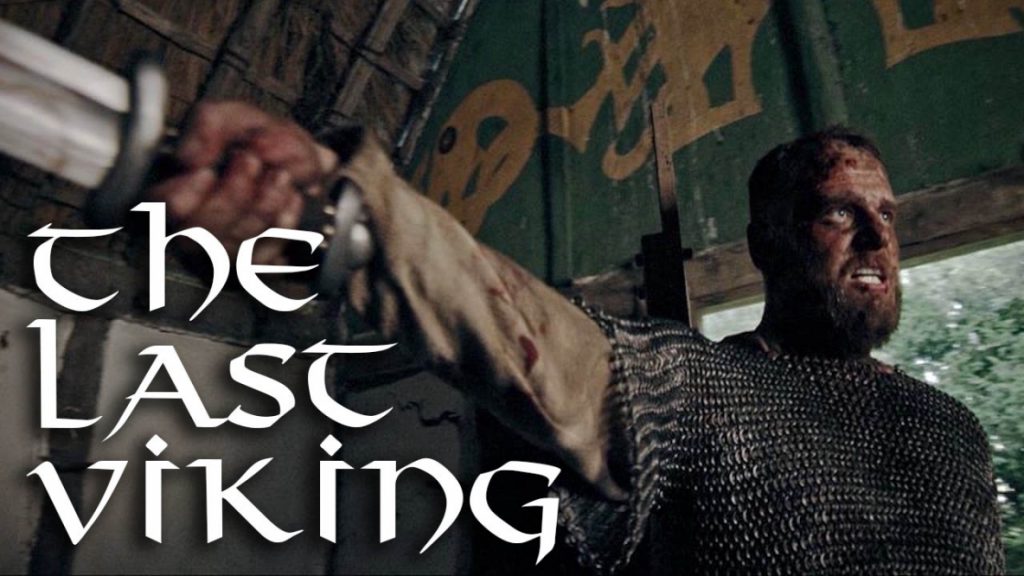Image credit: Cat Jarman
This article is an edited transcript of The Great Viking Army at Repton with Cat Jarman available on History Hit TV.
 Listen Now
Listen NowAn excavation in Repton, Derbyshire, represents of the most exciting early medieval, Viking Age breakthroughs that recent archaeology has seen. Originally excavated in the 1970s and 80s, the site contained plenty of evidence to suggest that it was the winter camp of a fearsome Viking force, known as the Great Heathen Army, which arrived in England in the 860s.
A lot of uncertainty was caused, however, when some of the remains from a mass grave at the site were radiocarbon dated and found to be from the 7th and 8th centuries, thus predating the Viking Age entirely.
As a result, experts started to doubt that the Repton site was a Great Army winter camp after all.
New research methods
Part of what I’ve been doing for my PhD research at Repton is trying to see what else we can find from the remains found in the mass grave and get closer to establishing if they belonged to the Great Army or not.
I’ve mainly been using bioarchaeological techniques and exploring new methods that might help us to reinterpret the existing carbon data.
These new methods weren’t properly understood 20 years ago, when the radiocarbon dates for the remains were originally established, but they can really affect the way in which we interpret our findings.
I began by looking at the radiocarbon dates and trying to work out if they were actually real or if there was a problem with them.
 Watch Now
Watch NowThings look fishy
Before I started on the project, new dates were sought, to see if there may have been a problem with the equipment originally used. But the new dates came out the same – some of the remains were still dating far too early.
We’ve now realised, however, that it’s important to take into account what sort of diets people ate, particularly whether they ate fish or not, because that can significantly affect radiocarbon dates.
So, I set out to see if that was the case in Repton.
When we radiocarbon date human bone, we are dating the carbon that we all have in our systems. We have carbon in our tissues, our skin, hair, bones… everything.
All that carbon comes from the food we eat. Whatever you eat today will effectively become your hair, your fingernails and your bones. When we die, we stop taking up any more carbon and it starts to decay. This is how we date it.
Which is all well and good if you only eat food from terrestrial sources or things from the land. If you eat meat and plant-based foods, there won’t be a problem, because the Carbon-14 in the atmosphere is pretty constant.
A fish-based diet is more problematic however, because fish get their carbon from the oceans.

The alleged remains of Richard III. Radiocarbon dating turned up much earlier dates than expected for these remains.
Carbon in the oceans gets there from the atmosphere, but then it circulates around for a very long time, sitting there for typically 400 years or so. Therefore there’s a 400-year difference between carbon in the sea and carbon in the atmosphere, and that difference is passed on to consumers.
Consequently, in most cases it’s now standard to look for marine consumption when radiocarbon dating.
But there are a number of very well-known cases of radiocarbon dating in which the same problem has arisen, including the dating of the remains uncovered in Leicester that are alleged to be of Richard III.
The radiocarbon dates of the alleged Richard III remains actually came out completely wrong, far too early, and so researchers had to do the process again and look at how much fish he ate.
 Listen Now
Listen NowCan you really work out if people were fish eaters?
It’s not just wild guesswork, there’s a proper scientific method. You can’t just say, “Vikings probably ate more fish because they came from Scandinavia”.
You have to look at each individual, which is what I’ve been doing. I’ve been using a method that looks at stable carbon isotopes, which are different in terrestrial and animal sources.
For example, if you’re a vegetarian or a vegan, I’d be able to tell that from your hair and your fingernails. I could also tell if you eat a lot of fish.
So we can make estimates of exactly how much fish a person ate and then consider how much we have to correct the carbon dating.
 Listen Now
Listen NowIn one of the Repton graves a man was buried with five coins, dating to between 872 and 875. This gives us something called a TPQ date or a terminus post quem – the earliest possible date for something.
The earliest possible date for that burial was therefore 872, but the radiocarbon dates came out between 600 and 700. So I was able to do the same thing with him and correct the dates for how much fish he ate, which was quite a lot as it turned out. When we entered that information into the software, the newly calibrated dates were absolutely spot on.















